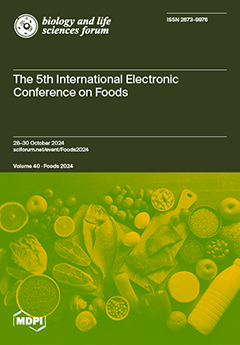The
Lamiaceae family of medicinal plants holds immense promise in the development of functional foods aimed at preventing and treating cardiovascular diseases (CVDs). These plants are rich in bioactive compounds, such as phenolic acids, flavonoids, and terpenoids, which act as potent enzyme inhibitors
[...] Read more.
The
Lamiaceae family of medicinal plants holds immense promise in the development of functional foods aimed at preventing and treating cardiovascular diseases (CVDs). These plants are rich in bioactive compounds, such as phenolic acids, flavonoids, and terpenoids, which act as potent enzyme inhibitors and exhibit strong antioxidant, anti-inflammatory, and antihyperlipidemic properties. Key phenolic compounds, such as rosmarinic acid and caffeic acid, along with flavonoids like luteolin, apigenin, and quercetin, contribute to these health benefits. Essential oils derived from
Lamiaceae species have demonstrated diverse biological activities, including vasorelaxant, thrombolytic, and cytotoxic effects, making them valuable in nutraceutical formulations. This study analyzes and investigates global patent trends related to
Lamiaceae plants targeting cardiovascular health, focusing on applications in nutraceuticals and functional foods. Using patent databases, we examine the technological landscape, identify leading applicants, and evaluate the geographical distribution of innovations. Our analysis reveals a notable increase in patent filings since the late 1970s, peaking in 2007, indicating a growing interest in leveraging
Lamiaceae plants for cardiovascular health. Tianjin Tasly Pharmaceuticals Co., Ltd. emerges as a leading applicant, reflecting active engagement by pharmaceutical companies alongside independent researchers and organizations. Geographically, China leads patent activity, followed by the United States and Europe, underscoring global interest and market potential. Key International Patent Classification (IPC) codes identified include A61K36/53 (
Lamiaceae extracts), A61P9/00 (cardiovascular drugs), and A61P9/10 (treatments of ischemic or atherosclerotic diseases). These findings highlight the therapeutic and commercial relevance of
Lamiaceae bioactives, offering insights into their potential in advancing cardiovascular health and shaping the future of the functional food and nutraceutical industries.
Full article



